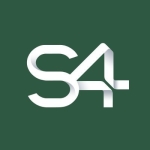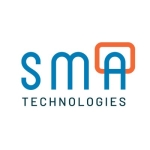What is our primary use case?
We are an auditing firm who has a certain level of tasks that are open for automating. These are complete steps, which can be performed by anyone, standardized, and do not involve any human intelligence. These are just basic human tasks. It is a long process, where in-between there are certain validation and verification steps as well as certain steps that involve a lot of documentation to go through. The organization is targeting all these tasks, which are completely static and can be automated, so they can get rid of them. Then, employees can work on something more useful as well as more productivity-oriented tasks.
Currently, I am dealing with our internal COE, providing RPA solutions to internal and external clients. UiPath is a driving force in our COE.
It is on-prem. There are a couple of discussions going around upgrading UiPath because there has been so much advancement with the solution.
How has it helped my organization?
Document Understanding was a game-changer. One of our clients has manual billing that needs to be processed. With the help of Document Understanding and UiPath Action Center, we created an excellent workflow for our client. It also gives us better accuracy. Now, there are hardly any exceptions in the client's billing documents that are being processed.
In my previous role, I presented some clients the end-to-end installation design of UiPath, e.g., building a PDD using Task Capture, going to UiPath Studio to build the actual solution, and then later going to post-production Insights.
UiPath has helped to minimize our on-prem footprint. Most organizations prefer on-prem because it reduces the risk of compliance issues.
Attended robots have been very beneficial for our users. UiPath saves one robot for every user. We have a couple of clients who are using attended automation for their day-to-day tasks.
What is most valuable?
From an organizational point of view, the most used feature is Orchestrator because that is how we manage more than 100 users. When there are more than 100 users, it is important, and probably better, to have some place to manage them. Orchestrator is doing that for us very well.
The most exciting new feature is UiPath Apps. I have explored it in-depth to get a better understanding. I think this product will be a game-changer for my organization as well as for my clients. It will revolutionize the way that we are providing licensing and proper access to a user. It also revolutionizes the way people are using it. Everything will be on the cloud, which I think is the most interesting feature of UiPath Apps.
UiPath Apps will definitely help to reduce the workload of our IT department by enabling end users to create apps. If you are creating an app and sharing it over the cloud, that removes the dependency of having UiPath installed with the correct version as well as Internet connectivity. Or, you might have a global server in the background that is not functioning very well. There are multiple issues related to connectivity of the UiPath robot when deploying it on a user's machine.
If you are giving access to a group of users and adding Azure container or any other container provided by UiPath, then this reduces 10 to 15 hours of work from the IT or support guys who are manually doing all these things by themselves. Not every user must have the new step of getting the UiPath license and software installed, it is really static. You are eliminating that task completely by having UiPath Apps on the cloud. This is definitely convenient for users to use.
We are not using UiPath Apps in my current organization. About two to three months ago, I created UiPath when I was at TCS. It was there that we demonstrated the power of UiPath Apps versus normal, conventional methods. It reduced our work through scalability. It helped us to easily scale and was more convenient, because giving new or temporary access can be a pain.
It is very easy to share UiPath Apps. When you want to start or remove it, you can do it with a simple click within the cloud. It is not that complicated. Also, the usage is better in UiPath Apps compared to the conventional UiPath robot. In UiPath Assistant, you can access the portal and simply run it over there. Therefore, you will not have a problem with the background functioning of the UiPath robot or even connectivity issues. Scalability and ease of use are favorable for users when they are using UiPath Apps.
Recently, I have been exploring Automation Hub. Its idea to pipeline a feature will be very useful for our guys managing RPA products on a large scale.
What needs improvement?
When it comes to debugging, there is some improvement needed for UiPath compared to other RPA tools. There are features to edit the workflow or content of the automation file while we are debugging. For example, we have 10,000 lines of code that we have integrated by 10 different users. So, there is one integrated code and you are debugging it. After some time, you might find a line which is not an error. You may have forgotten to remove it or change the value to your desired criteria. It is really a pain to stop the entire debug session and just edit it, then start again at zero. It will do the same steps again just to reach that level or step where you were actually stuck previously. Whereas, in different automation tools, whether you are on the findings step or in-between a debug session, you can actually edit that information. This is good because sometimes the developer also forgets to add or remove certain values in-between a long code. I think this should be improved in UiPath. This should already be in consideration because I have been in touch with UiPath a couple of times because of this.
My current company is currently looking at the end-to-end solution. However, Insights and Task Capture are major concerns. Task Capture will give you a skeleton of the PDD, then you have to edit it. The skeleton is only there for simple automation, and we have complex scenarios. It is so complicated that the PDD generation using Task Capture will not give you even 20% of the output. While Task Capture is something promising, people are looking at it with greater expectations than it provides. People are not using Task Capture or Insight because of their limitations. These features could use improvements and enhancements.
For how long have I used the solution?
I have been using UiPath for three years. I recently switched companies. I worked with Capgemini and TCS prior to this company, where I was in their COEs and providing solutions to clients. This is the first time that I have been on a project for PwC. Since the start of 2018, I have worked mainly in COEs and have interacted with around 30 clients up until now.
PwC, as a firm, has been using this technology for four to five years.
What do I think about the stability of the solution?
I have been using UiPath on a different powerful system that has high-end RAM. Sometimes, it crashes due to the use of multiple components at once. For example, when I was using Druid with data service and another UiPath product. Developing was quite easy. However, when debugging, sometimes it would freeze. I don't know whether it was because of my system and its compatibility, my system's configuration, or the fact that we were using so many high-end tools and products at once.
The robustness of the tool, when it comes to using high-end products, is something that I am currently exploring. This is something that is currently a bit of concern for other developers as well. I have been interacting with a lot of developers around the globe. As a part of that, I tend to share my experiences. They have shared that it will sometimes freeze, even with simple automation. Because we are using new features or products all at once, it freezes. I think this should not be the case. If you are using long, heavy code, and it gets frozen at one point, I can understand that. However, 10 simple lines of code, while using three or four products at once, is getting frozen. That should be taken care of or improved.
To troubleshoot the system crashing, we contacted UiPath. They were kind enough to reply and have a discussion. They are working on this and trying to make it more convenient so future releases will solve this problem.
What do I think about the scalability of the solution?
As a part of a COE, we get clients who expect us to present the entire proof of concept as well as a PPT or presentation. For example, why they need to go with UiPath, what are the advantages/disadvantages, if any, and why we should not go with another tool or solution as a whole, not just RPA. The main point for us when presenting UiPath is the ease of usability and scalability. We don't need major infrastructure changes, just two or three URLs to be widely fitted. Then, they need to decide if they want unattended or attended robots. The scalability is the major driving force which excites our clients and us, because there isn't a need to have media-heavy software or heavy processes changes.
Clients don't want every user in their organization who joins to have a long process to get through the start up. Automation Cloud is something they were very much interested in exploring because of the scalability. They find it very easy to use and scale, because not all the clients have a certain set of users using robots.
I have seen user usage explode from zero to a bigger audience of 22 users.
UiPath is used extensively in my current organization on a large scale. There is also a plan to scale it to more users.
How are customer service and technical support?
PwC has their internal teams providing a "help center" sort of infrastructure to them. If there was a need for any help, or some basic doubt, it is solved internally. PwC's internal help center exists already. However, for major issues, we reach out to UiPath, as a customer, so that we can receive a response and clarity on issues.
The technical support is really great. I have been in touch with all sorts of UiPath support because I was in the COE and our clients were completely global until my latest assignment. I think UiPath India, France, Belgium, and Canada are timely. They provide a very precise support experience. They were kind enough to let us know the actual reason, because just saying that it is a bug is not something that we can comfortably accept or digest. Also, they have been kind enough to follow back up on updates and bugs that we have reported.
As a whole, I have reported more than 25 bugs across all their products. They were kind enough to reach out to the same forum where we raised the ticket. They were kind enough to reply that these are the updates that they will roll out in the next version. It is good to have this interaction as well as a heads-up regarding your bug reports. I think the technical support is on the mark and doing their job really well.
The learning tools and support are really great. They have the most engaging forum across the globe, compared to other RPA tools. The learning and engagement are really up to the mark. That also brings confidence to our clients and us. We are a part of their global community forum, which is a benefit for us.
Their marketplace has grown tenfold in the last year. It is because of the developer's involvement as well as involvement from people in the community. UiPath is creating their own statements and usable components, which adds value to our presentation. The tool is growing, and developers and community members are growing with them.
Which solution did I use previously and why did I switch?
My previous companies migrated from other RPA solutions, like Automation Anywhere, Blue Prism, and NICE Robotic Automation, to UiPath because of the value of its features and the quality of the overall solution. I migrated my clients from those companies so they could have a better ROI and reduce the cost of maintenance. We also migrated from scheduling tools, like AutoSys, to provide better accuracy and ease of use.
My current company was not previously using an RPA solution.
How was the initial setup?
The initial setup and implementation are standard, simple, and user-friendly. UiPath just requires basic adjustment, then it is plug and play. It is very easy for everyone to understand, e.g., non-technical clients can understand what has been changed.
If the deployment is done properly, you will see better data accuracy with UiPath than manual entry. If the deployment is done by someone without much experience, it will affect the quality of the solution due to bad coding. You can't just leave it to the tool.
Using Automation Cloud makes it easier to deploy.
What about the implementation team?
It takes almost two weeks for us to implement from scratch because we must understand the client's infrastructure, create a solution design, and then present it to them.
We present our clients with a PoC, including a document that justifies the work and costs. We also give them a standard robot that we created for demo purposes. This way, they can visualize how it will be implemented and mapped in their organization.
For deployment, one or two people are sufficient: one from an infrastructure background and another from a technical background. Sometimes, it is complex or hard to understand the client's needs when it comes to the deployment of Azure, Nvidia, or AWS servers on their VPN connection.
The amount of staff needed for maintenance depends on the size of the solution, e.g., the bigger solutions will need more people. However, the maintenance and support activities can also be automated and that reduces the need for support and maintenance. Three or four support team members are enough with the help of a robot.
What was our ROI?
The last ROI calculation that we did for a client showed that they saved 25% of their time by automating a manual task with an unattended robot for a single machine.
Overall, the cost remains the same to the client and us, when using Automation Cloud, because of the amount of money spent on the cloud migration and cloud usage.
At my previous company, in the best scenario, we removed almost 200 hours per month of client usage, making it automated with almost zero errors. So, about 32 employees were freed up from their work per month, and now there are only two. This has enabled employees to focus on higher-value work that involves human-base interaction. This saved the client money and provided a recruitment benefit.
UiPath has been useful for improving employee satisfaction. Employees are now spending time on more value-add work instead of something static, whether it is boring or hectic, that they have been working on for ages. This gives employees a sense of advancement.
What's my experience with pricing, setup cost, and licensing?
I would rate the pricing as seven out of 10, where 10 is the most expensive. The pricing increased with the latest release. It used to be cheap. Now, it is expensive. However, it does come with supported features, which almost justify its cost.
Which other solutions did I evaluate?
Building automations is very easy. I have used multiple RPA tools. Developing automation with UiPath is very convenient compared to other tools.
Development is very easy. I have been exploring certain markets based on the marketplace component and its native integrations with ServicesNow for the chatbot. I think development is where UiPath stands out as a winner compared to other tools because starting to automate is very easy.
Compared to other RPA tools, UiPath is leading with new feature additions every quarter. Obviously, all the new features will not be incorporated into the solution or be helpful for the client. We see the organization putting in efforts to grow at a rapid pace, including ML, scaling, and everything on the cloud, like data servers. UiPath gives us the confidence to present a tool that can be relied on because it is constantly growing. It constantly has certain new features added which can be beneficial.
With UiPath, not everyone needs to understand the code, which is great. This makes it superior over other tools because it is easy to understand. This contributes to profits because clients prefer UiPath over something else because they have more confidence using it.
Blue Prism has the ability to edit in the middle of a debug. As far as I have explored, Blue Prism is leading on the debugging front and stands out against UiPath. Debugging in Blue Prism gives users a lot of usability to edit the workflow. This makes it easier for developers to run things once and get things done. Otherwise, debugging multiple times can sometimes be a pain.
People migrate to NICE Robotic Automation because they were having difficulty maintaining their software with a limited number of staff.
It is easier to become more proficient with UiPath than other RPA tools, especially Blue Prism. Training can be done at almost no cost.
What other advice do I have?
I would suggest automating a policy that is not a requirement and follows a process. As an RPA user, it is your responsibility to get things done in an efficient way. If a user is doing A, B, C, D, it might not be required that the robot do the same thing. There might be a shorthand that can take you from A to D directly using the robot. For example, it can go directly to a page and not have to click 10 things like a human.
If you use it properly and consciously, it can increase accuracy and reduce error. If you don't, then it will be the other way around.
As features are concerned, it is reasonably priced compared to any other heavyweight tools in the market.
It is beneficial that there is a SaaS option because this offers a diversified cloud environment. If we expand and explore more cloud options, then having a SaaS solution for UiPath will be beneficial for us. Right now, SaaS comes with a certain amount of compliance issues for my company.
UiPath AI Center is very useful. I think it is a game-changer when it comes to better usage. However, I haven't had much of a chance to explore it on an enterprise level. Not many clients are using it because of the exposure risk. Once a lot of developers start exploring and developing on it, then more companies will have the confidence to say, "Yes, we can push to that," which will increase the usage of UiPath AI Center.
Everything on the UIPath Cloud is a template. It is just a starting point. You have to dig into it and do more exploration to make it better.
Using Automation Cloud would be very beneficial for us, as a COE, because we are getting rid of the mundane tasks of infrastructure, maintenance, and upgrades, which we do not think are our primary job.
Biggest lesson learnt: UiPath has the fastest growing community with the quickest learning tools. It is easy to automate. It requires basic understanding and effort to get started.
I would rate UiPath as 9.5 out of 10. I have concerns about the debugging capability, where if I need to edit something while debugging, I can't do it right away without stopping the process.
Which deployment model are you using for this solution?
On-premises
Disclosure: PeerSpot contacted the reviewer to collect the review and to validate authenticity. The reviewer was referred by the vendor, but the review is not subject to editing or approval by the vendor.


















